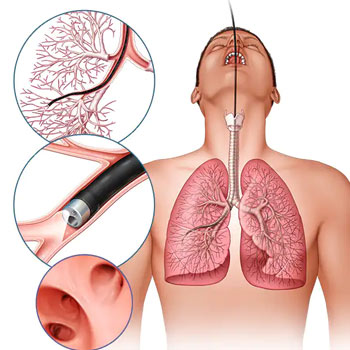What is Bronchoscopy?
Bronchoscopy is a medical procedure that allows doctors to examine the inside of the airways and lungs. This diagnostic tool is pivotal in the field of pulmonology, enabling healthcare professionals to diagnose and treat various respiratory conditions. The procedure involves the use of a bronchoscope, a thin, flexible tube with a light and camera at its tip. This device is inserted through the nose or mouth and threaded down into the lungs.
Purpose of Bronchoscopy
Bronchoscopy is employed for both diagnostic and therapeutic purposes. Diagnostically, it helps in identifying the cause of respiratory issues such as persistent cough, infections, or abnormalities seen on chest X-rays or CT scans. Therapeutically, it can be used to remove foreign objects, clear mucus, or administer medication directly into the lungs.
Diagnostic Applications
Biopsy
One of the primary reasons for a bronchoscopy is to perform a biopsy. This involves taking small tissue samples from the lungs or lymph nodes to check for conditions like lung cancer, infections, or inflammatory diseases
Visual Examination
Doctors can visually inspect the airways for any abnormalities, such as tumors, inflammation, or blockages. This helps in assessing conditions like chronic bronchitis, emphysema, and other chronic obstructive pulmonary diseases (COPD)
Fluid Analysis
Sometimes, bronchoscopy is used to collect samples of mucus or lung fluids, which are then analyzed for the presence of infections, bacteria, or other pathogens
Therapeutic Applications
Foreign Object Removal
If a foreign object is lodged in the airways, bronchoscopy can be used to remove it. This is especially common in children who might inhale small objects
Tumor Treatment
Bronchoscopy can help in treating tumors by delivering high-dose radiation directly to the cancer cells or by using laser therapy to remove the growths
Mucus Clearance
For patients with excessive mucus due to chronic bronchitis or cystic fibrosis, bronchoscopy can help clear the airways, making breathing easier
What are the Types of Bronchoscopy?
There are two main types of bronchoscopy: flexible and rigid
Flexible Bronchoscopy
Flexible bronchoscopy is the most common type and is typically performed under local anesthesia with sedation. The flexible bronchoscope can navigate the smaller bronchi and is less invasive, making it suitable for a wide range of diagnostic and therapeutic procedures.
Rigid Bronchoscopy
Rigid bronchoscopy is performed under general anesthesia and is used for more complex procedures, such as removing large foreign objects or controlling significant bleeding. The rigid bronchoscope is a straight, hollow tube that provides a wider working channel
Preparation and Procedure
Preparation
Before undergoing a bronchoscopy, patients are usually advised to avoid eating or drinking for several hours. They should also inform their doctor about any medications they are taking and any allergies they might have. Pre-procedure tests, such as blood work or a chest X-ray, may be conducted to ensure the patient’s suitability for the procedure.
During the Procedure
The bronchoscopy procedure typically takes about 30 to 60 minutes. The patient is sedated to ensure comfort, and a local anesthetic is applied to numb the throat. The bronchoscope is then gently inserted through the nose or mouth and guided into the lungs. The doctor can view the images transmitted by the camera on a monitor, allowing for a detailed examination of the airways.
Post-Procedure
After the procedure, the patient is monitored for a few hours to ensure there are no immediate complications. It’s normal to experience a sore throat, hoarseness, or a cough for a few days. In rare cases, more serious complications like bleeding, infection, or pneumothorax (collapsed lung) can occur.
Bronchoscopy is a vital tool in the field of pulmonology, offering a minimally invasive way to diagnose and treat a variety of lung conditions. Understanding the purpose, types, and procedure of bronchoscopy can help patients feel more informed and prepared if they need to undergo this important diagnostic test. Always consult with a healthcare professional to understand the risks and benefits specific to your health condition.

